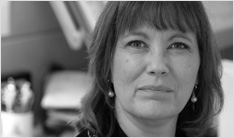 “Let the Bible speak for itself,” my friend said over her latté. “All of this specialty gobbledy-gook just waters down what’s really important.”
“Let the Bible speak for itself,” my friend said over her latté. “All of this specialty gobbledy-gook just waters down what’s really important.”
I had just described for her some of the Bible projects I was working on. I think she went on overload as I talked about the specialty Bible products that pass through Livingstone’s hands every year.
I couldn’t help but wonder if she had a point. Isn’t that part of the struggle we’re all facing in Christian publishing? As Bible publishers jostle for shelf space, as we consider the sheer cost of producing a 2000-page Bible, we also wonder, “Is there room for another Bible?”
I believe there is—there always is. And I don’t say that just because I’m in the business.
I say that because I love God’s Word with every fiber of my being—as do most of us who stare into our computer screens all day laboring over products that are meant to share that Word in a variety of genres.
I love God’s Word because it changes lives. I know that from personal experience.
I remember receiving a specialized New Testament in The Living Bible back in 1975 when I was in high school. I brought that New Testament home and devoured it—and I vividly remember reading the book of Hebrews and actually “getting it.” It was an AHA moment, a moment when I understood what the book was about and how the New Testament fit with the Old Testament. And I’ve been in love with Scripture ever since.
My heart is to help others have those AHA moments. I want them to realize that the Bible is not a big scary book, but a big amazing story—so big that it reaches across time itself. And yet, it can reach into their lives on a rainy day and give them the comfort they need to keep going. Those AHA moments mean they get it. They begin to see how the pieces fit together and to understand how that matters to them personally.
As a kid of 17 in 1975, I needed the simple and clear language of The Living Bible to make the book of Hebrews make sense to me (thank you, Ken Taylor). So as I watch different Bible versions be created, I’m overjoyed. Someone else will have an AHA moment as well.
Now granted, in the same breath I could also say that the same person may find himself utterly confused. Standing at the local Christian bookstore to buy a Bible, he thinks to himself, NIV? ESV? GWT? NLT? KJV? NKJV? NRSV? OK, I really need some help here. I’m drowning in alphabet soup! But if he reads a few lines of these Bibles, it won’t take long before he finds one that reads to his level, his liking.
Aren’t we amazingly privileged to be able to do this? William Tyndale would be astounded.
Beyond that, however, we might ask the question my friend was pondering—specialty gobbledy-gook. By adding our ancillary material, are we guilty of not letting the Bible speak for itself?
I fondly remember purchasing my very first study Bible after wearing out my New Testament. I had started college and wanted something with notes, something that looked serious, something to help me really understand more deeply what the Bible was saying. That first study Bible was a burgundy bonded leather Criswell Study Bible. His “scarlet-thread of redemption”—his way of describing how the salvation message runs throughout Scripture—captured my heart. Through those notes began a journey that has brought me where I am today.
But have we gone too far? Do moms, dads, parents, kids, teens, tweens, sick people, hurting people, tired people, business people really all need a Bible of their own?
I believe that if we can create something that will speak to them, then we should do so. Why? Because of the AHA moments that still need to happen in the lives of those moms, dads, parents, kids, teens, tweens, etc. People need Scripture “in their own tongue”—the material we produce is meant to help those people understand that the Bible speaks to them, it’s relevant. Mind you, we aren’t making the Bible relevant (it doesn’t need our help), but we are helping these many audiences see that relevance, maybe for the first time. For some of those people, that plain text Bible in a particular translation or that specialty Bible designed just for them might provide that first AHA experience.
My friend didn’t want me watering down what was most important. I explained to her that I just see myself as laboring alongside modern-day Martin Luthers and William Tyndales and early church leaders who simply sought to bring Scripture to the people—all people, in all places, in all walks of life, in all phases of life. Whatever it takes, I want them to have that AHA experience that will help them see the message of salvation and grace.
And really, isn’t that what it’s all about?
Linda Taylor, Editorial Director
VN:F [1.9.22_1171]
Rating: 0.0/5 (0 votes cast)
VN:F [1.9.22_1171]

 “Let the Bible speak for itself,” my friend said over her latté. “All of this specialty gobbledy-gook just waters down what’s really important.”
“Let the Bible speak for itself,” my friend said over her latté. “All of this specialty gobbledy-gook just waters down what’s really important.” Livingstone on Twitter
Livingstone on Twitter Livingstone on Facebook
Livingstone on Facebook